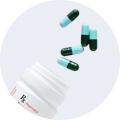Chemical catalysts from chemical catalyst companies in the environmental protection sector are evolving rapidly around the core directions of "high performance & multi-functionality, green & low-carbon, intelligence & integration, recycling closed-loop, and scenario expansion". Driven by both policies and market demands, the Chinese market will continue to expand and move toward high-end development.
Key Trends and Highlights
- High Performance & Multi-Functional Integration: Synergistic improvement of SCR+TWC/oxidation, low-temperature & wide-temperature adaptability, anti-poisoning capabilities, and long service life. Advanced materials (perovskites, MOFs, nanostructures, supported precious metals) and active site engineering are driving the dual optimization of catalytic selectivity and stability.
- Green and Low-Carbon Orientation: Adoption of green synthesis and low-energy processes, reduction or elimination of precious metal usage, co-processing of biomass/waste plastics, CO₂ resource utilization, and full-lifecycle carbon reduction have become rigid constraints.
- Intelligence and Digitalization: Mechanism + data-driven AI-aided catalyst design, high-throughput experimentation and screening, online monitoring, and digital twins are shortening the R&D cycle and enhancing engineering stability.
- Equipment and Process Integration: Modularization, standardization, and intelligent control enable adaptive operation and rapid switching under different working conditions, improving the overall efficiency of the system.
- Recycling and Circular Economy: Full-lifecycle recycling and regeneration of precious metals, reuse of catalyst carriers, and compliant disposal of spent catalysts are strengthening economic viability and regulatory compliance.
- Scenario and Market Expansion: Demand for catalysts is growing simultaneously in industrial waste gas treatment (petrochemical, steel, building materials, glass), VOCs abatement, mobile sources (including hybrid and non-road vehicles), water treatment (ozone catalysis/advanced oxidation), and hydrogen production & fuel cell-related catalysis.
- Policy and Market Drivers: Tighter environmental regulations, coupled with the "dual carbon goals/energy consumption dual control" policy, are accelerating the upgrading of catalysts toward high-end, green, and customized solutions. The scale and production capacity of the Chinese market will continue to rise.
Timeline and Priority Recommendations
- 1–3 Years: Prioritize the development of low-temperature/wide-temperature SCR/oxidation catalysts, integrated VOCs treatment equipment, ozone catalysts, and online monitoring systems. Promote the closed-loop recycling of precious metals and modular transformation to achieve cost reduction, efficiency improvement, and compliance benefits.
- 3–5 Years: Implement AI-based design and high-throughput screening, expand the application of perovskites/nanostructures/supported precious metals, strengthen CO₂ resource utilization and supporting technologies for waste plastic/biomass co-processing, and build advantages in full-lifecycle LCA (Life Cycle Assessment).
- 5–10 Years: Improve integrated platforms for synergistic treatment of multiple pollutants, deepen intelligent operation & maintenance and predictive maintenance, and expand overseas and regional localized production capacity.
Action Checklist (For Enterprises/R&D/Engineering)
1. Establish a TCO (Total Cost of Ownership) evaluation system based on "service life × selectivity × anti-poisoning/anti-sulfur-water performance", and simultaneously plan a regeneration and recycling network.
2. Adopt AI-aided screening and formula optimization combining "mechanism + small-sample data", and accelerate iteration with high-throughput experiments.
3. Select modularly integrable equipment (SCR/TWC/oxidation/filtration) and reserve digital interfaces to realize adaptive control.
4. Build low-carbon process combinations around "green electricity/green hydrogen + CO₂ resource utilization + biomass/waste plastics", and quantify CO₂e (carbon dioxide equivalent) and water consumption per unit product.
5. Proactively layout catalyst demands for wide-temperature windows and cold-start optimization in hybrid and non-road mobile sources.

